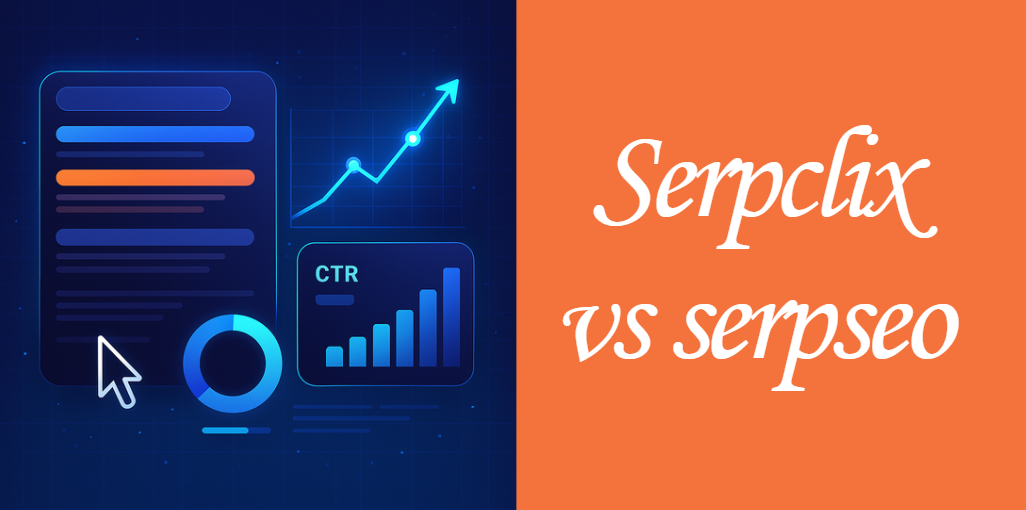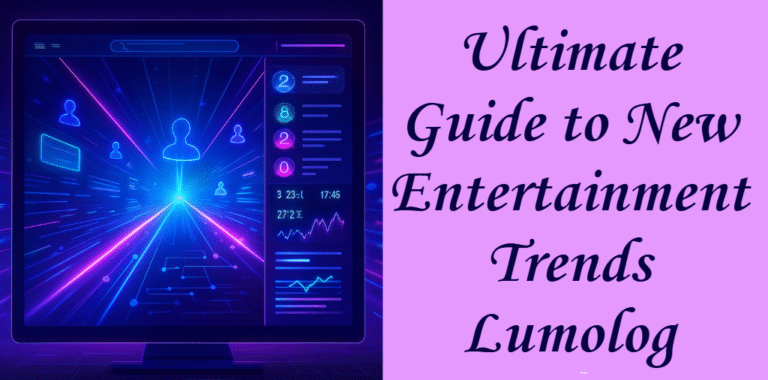Serpclix vs serpseo: The Ultimate Comprehensive Guide to Boosting SEO Rankings
In today’s digital marketing landscape, search engine optimization (SEO) is crucial for any website’s success. Many businesses employ various techniques to improve their online visibility, and one technique that has gained considerable traction is click-based SEO. serpclix vs serpseo compares two leading tools in this space.
While they both aim to boost user engagement metrics such as click-through rate (CTR) and dwell time, they achieve these goals through different strategies. This guide is designed to help you understand every nuance of these tools so you can build a strategy that supports both immediate impact and long-term growth.
Whether you are new to SEO or an experienced professional, the sections that follow will deliver clear and easy-to-read information, complete with detailed comparisons, lists, and tables. Our structured approach ensures you have a comprehensive resource to refer back to whenever you need to refine your SEO efforts.
Understanding the Basics
What is SERPClix?
SERPClix is a tool that focuses on generating real user clicks by leveraging a crowdsourced network of human clickers. Its primary function is to improve a website’s CTR by creating organic-looking clicks. When genuine users search for your target keywords and click on your website’s link, search engines interpret these signals as an indication of relevance.
Consequently, your site may see improved rankings. The simplicity of SERPClix makes it appealing for those who require quick results and minimal setup effort.
What is SERPSEO?
In contrast, SERPSEO takes a more advanced approach by not only generating clicks but also simulating natural user engagement through artificial intelligence. This tool goes beyond basic click generation by incorporating metrics such as dwell time, scrolling behavior, and session-based navigation.
As a result, SERPSEO provides a more comprehensive model of user interaction, leading to long-term ranking improvements. Unlike SERPClix, which is straightforward and immediate, SERPSEO requires a deeper understanding of engagement signals and comes with a higher learning curve.
The Role of CTR and Engagement Metrics in SEO
User engagement metrics play a vital role in modern SEO. Google and other search engines evaluate CTR, dwell time, bounce rates, and other behavioral factors to determine a website’s relevance and quality.
Higher engagement signals, as generated by tools like serpclix vs serpseo, contribute significantly to improved SERP rankings. This guide explains how both tools harness these metrics differently and why a well-rounded strategy is essential for sustainable growth.
How SERPClix Works
Mechanism: Real User Clicks
SERPClix operates on the principle of crowdsourcing. The tool connects you with a network of real users who perform targeted searches and click on your website’s link. By doing so, it artificially boosts your CTR, which may prompt search engines to recognize your site as relevant.
Although the clicks appear organic because they come from actual human participants, the interactions are limited to the click itself without further engagement beyond the initial visit.
Campaign Setup and Customization
Once you set up a campaign on SERPClix, you can specify target keywords and even geolocation parameters to focus your efforts. The interface is simple: create a campaign, choose your keywords, and let the tool do the work. You can also determine how long each click session should last.
However, because the platform primarily focuses on the click, these additional parameters have limited customization options compared to more advanced platforms.
Pros and Cons of Using SERPClix
SERPClix offers clear benefits for users who need immediate improvements. Many businesses have experienced swift increases in visibility using this approach. However, there are potential downsides. The short-term nature of the boost means that once the campaigns stop, the ranking improvements might diminish.
Additionally, overreliance on basic click generation could raise red flags with search engine algorithms that are increasingly sophisticated at detecting manipulated engagement.
How SERPSEO Works
Mechanism: AI-Driven User Behavior Simulation
SERPSEO distinguishes itself by integrating artificial intelligence to simulate not only clicks but also a full range of user behaviors. This includes extending the duration of visits (dwell time), simulating scrolling through pages, and even mimicking interactions with internal links.
These simulated behaviors make the user engagement appear much more natural and comprehensive, which is crucial for long-term ranking improvements.
Advanced Customization Options
With SERPSEO, users can fine-tune engagement parameters to match real-life browsing behaviors. The interface allows for detailed adjustments such as setting optimal dwell times and varying interaction patterns to avoid detection by search engines.
Customization is at the heart of SERPSEO, which is why it is favored by those who aim for sustainable SEO gains. The advanced analytics provided by the tool also allow users to monitor and refine their campaigns continuously.
Pros and Cons of Using SERPSEO
The strength of SERPSEO lies in its ability to create a robust and realistic simulation of user behavior. This leads to more durable ranking improvements, especially when considering the evolving algorithms of search engines.
On the downside, the tool’s complexity means that there is a steeper learning curve. The higher level of customization and control, while advantageous for advanced users, might be overwhelming for beginners. Moreover, the enhanced features come with a higher price tag, making it a more significant investment for those seeking long-term benefits.
Comparative Analysis: serpclix vs serpseo
To help illustrate the key differences between serpclix vs serpseo, we present a comparative analysis in a table format below:
| Aspect | SERPClix | SERPSEO |
|---|---|---|
| Primary Function | Generates real user clicks to boost CTR | Simulates clicks along with detailed user behaviors (dwell time, scrolling, session depth) |
| Customization | Simple campaign setup with basic parameters | Extensive customization options with AI-driven behavioral simulation |
| User Engagement | Limited to clicks; minimal further interaction | Mimics full user interaction, resulting in more natural engagement signals |
| Results Timeline | Quick, immediate improvements; short-term gains | Slower to build, but more sustainable and lasting improvements |
| Risk of Detection | Higher risk if overused or lacking additional engagement signals | Lower risk due to diversified and realistic engagement simulation |
| Pricing Model | Pay-per-click model; cost-effective for short-term campaigns | Subscription-based model; higher upfront cost but more predictable for long-term investment |
This table clearly highlights that while SERPClix may be preferable for those seeking an instant boost, SERPSEO offers a more comprehensive and risk-averse approach for sustained SEO success.
Advanced Strategies for Integrating serpclix vs serpseo into Your SEO Plan
Integrating these tools effectively within your overall SEO strategy is essential. Successful businesses often combine quick wins with sustainable practices.
One common approach is to use SERPClix for time-sensitive campaigns or for new product launches where immediate traffic is critical. Alongside, utilize SERPSEO as a foundation for ongoing optimization efforts. By analyzing user behavior through detailed analytics, you can refine your campaigns periodically. This dual strategy ensures that you benefit from both immediate engagement boosts and long-term ranking stability.
Additionally, it is important to avoid common pitfalls such as over-dependence on any single method. Maintain an ethical approach by combining high-quality content, backlink strategies, and technical SEO improvements. This diversified method is less likely to incur penalties from search engine algorithms while effectively boosting your rankings.
Future Trends and Evolving Algorithms
The SEO landscape is continuously evolving, driven by regular updates to search engine algorithms. As Google enhances its capability to detect manipulative engagement tactics, it becomes increasingly important to adopt strategies that simulate natural user behavior. In the future, tools like SERPClix vs SERPSEO will likely incorporate even more advanced AI and machine learning techniques to further refine engagement simulations.
Staying informed about these trends and regularly updating your strategies will be key. Preparing your SEO plan for algorithm updates now ensures that your website remains competitive in the long run.
Final Verdict and Recommendations
To summarize, our comprehensive comparison of serpclix vs serpseo suggests that both platforms have their unique advantages and drawbacks. If you require an immediate, cost-effective boost for short-term campaigns, SERPClix is ideal.
However, if your goal is sustainable, long-term SEO growth with robust engagement metrics, SERPSEO is the superior choice. For the best outcomes, a hybrid approach that uses each tool where it excels, complemented by a strong content, backlink, and technical SEO strategy, is recommended.
FAQs
Q: What is the best campaign frequency to ensure consistent performance using these click-based tools?
A: The optimal campaign frequency depends on your website’s niche and current traffic levels. Many experts recommend running short-term campaigns in periodic bursts to test and recalibrate, rather than maintaining constant campaigns. Regular evaluations every few weeks can help determine the right frequency without saturating user behavior signals.
Q: How do these tools integrate with broader SEO analytics and reporting systems?
A: Both SERPClix vs SERPSEO can work alongside popular analytics platforms by exporting performance data and integrating with tools like Google Analytics or custom dashboards. This integration allows you to monitor additional metrics, correlate user engagement with organic traffic, and adjust your overall strategy without disrupting existing workflows.
Q: Which additional user engagement metrics, beyond CTR and dwell time, should be tracked for overall campaign effectiveness?
A: Key performance indicators such as conversion rate, page load speed, bounce rate, and session length are valuable. Monitoring how these metrics evolve alongside click patterns can provide deeper insights into user intent and help refine your strategy for improved user experience and long-term ranking gains.
Q: In what ways can these tools be adapted to align with seasonal marketing campaigns and trends?
A: Tailoring campaign parameters for seasonal fluctuations involves adjusting targeting settings and spending levels based on historical performance data during peak and off-peak periods. Experimenting with customized engagement behaviors can help capture the unique traffic patterns of holidays, sales events, or industry-specific seasonal trends.
Q: How should the return on investment (ROI) for click-based SEO campaigns be measured effectively?
A: ROI can be measured by comparing the incremental organic traffic, conversion improvements, and revenue increases after campaign execution against the cost of the campaigns. Additionally, looking at long-term improvements in keyword rankings and overall website authority will provide insight into how effectively the tools contribute to sustainable growth.
Conclusion
In the evolving world of SEO, where user engagement signals play an increasingly critical role, understanding the differences between serpclix vs serpseo can be a game-changer. While SERPClix offers a simple, quick solution through real-user clicks ideal for short-term gains, SERPSEO provides a deeper, AI-driven approach designed for sustainable, long-term results.
Choosing the right tool depends on your goals, budget, and how advanced your strategy is. However, combining the strengths of both tools within a broader, ethical SEO plan—backed by quality content and technical optimization—can maximize impact while reducing risks.
By staying informed, adapting to algorithm changes, and using these tools strategically, your website can rise in the SERPs and maintain a competitive edge for the future.
In short, whether your focus is short-term gain or long-term stability, this comprehensive guide has equipped you with the knowledge needed to harness these powerful click-based tools and secure your position at the top of search results.
Read more
Ultimate Guide to ruby studded boots we101
Ultimate Comprehensive Guide to ”jecizer biosciences”
Ultimate Guide to business insights shopnaclo: In-Depth Analysis for E-Commerce Success






